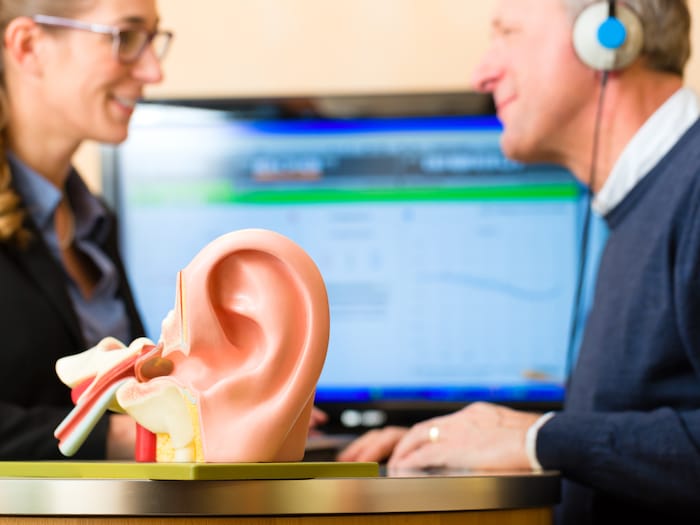The most common audiometry test is pure tone audiometry (PTA) which uses pure tone to measure the hearing thresholds of a person. A speech audiometry test is another type to evaluate a person’s hearing threshold using speech as stimuli.
The speech stimuli for assessing speech audiometry are usually words, syllables, non-sense syllables, and sentences. The audiologist can assess optimal listening conditions (quiet) or with background noise. The background noise may reflect the real-life situation where all the conversation goes on.
All this could help assess central auditory processing problems and consider other options aside from hearing aids or differential diagnosis if we are considering a few pathologies. By doing speech audiometry, the audiologist could also measure the ability of a person to understand speech, and we can cross-check the results with PTA.
There are different speech audiometry tests, such as
Speech detection threshold
Speech detection threshold (SDT) measures an individual’s ability to detect speech sounds. It refers to the minimum sound level (in decibels) required for a person to understand 50% of the speech sounds presented to them in a speech detection test.
The SDT is an essential aspect of the hearing assessment. It is used to diagnose and monitor hearing loss and evaluate the effectiveness of hearing aids or other assistive devices.
Speech recognition threshold
Speech recognition threshold (SRT) measures an individual’s ability to recognize speech sounds in a noisy environment. It refers to the minimum sound level (in decibels) required for a person to understand 50% of the words presented to them in a speech recognition test. The SRT is often used with the speech detection threshold (SDT) to more fully assess an individual’s ability to understand speech in different listening conditions.
The SRT provides essential information about how well a person can understand speech in noisy environments and can help guide the selection and fitting of hearing aids or other assistive devices.
Speech discrimination test
A speech discrimination test is a diagnostic tool used to assess an individual’s ability to understand speech in quiet and noisy environments. The test typically involves the presentation of words or sentences at different levels of loudness and clarity. The person is checked to see whether they understand each word or sentence correctly. The test is designed to measure speech discrimination, or the ability to distinguish between individual speech sounds and words.
It can provide important information about the type and severity of hearing loss. The test results can guide the selection and fitting of hearing aids or other assistive devices.
Speech detection test is also an important test other than PTA because speech is the stimuli most of us are exposed to daily. It provides a lot of information regarding the outcome of hearing aid usage in terms of the ability to understand different words.
A speech detection test is a diagnostic tool used by audiologists to evaluate an individual’s ability to understand speech. The test typically involves the presentation of words or sentences at different levels of loudness and clarity. The person being tested indicates when they have heard and understood each word or sentence. The test helps determine the type and severity of hearing loss, and the results can guide the selection and fitting of hearing aids or other assistive devices.
In Singapore, speech audiometry tests are frequently included in hearing evaluations due to the need for efficient evaluations and the availability of necessary equipment. Validated materials are required for these tests to be valid and reliable. Audiologists can utilize multiple language materials during speech audiometry to better evaluate hearing abilities.
Can you take the test? Enquire today.
